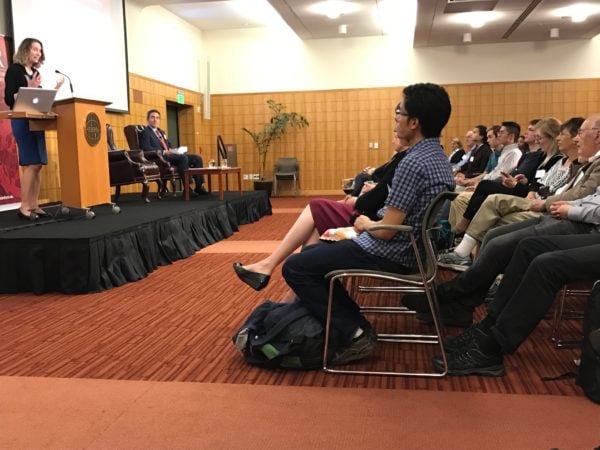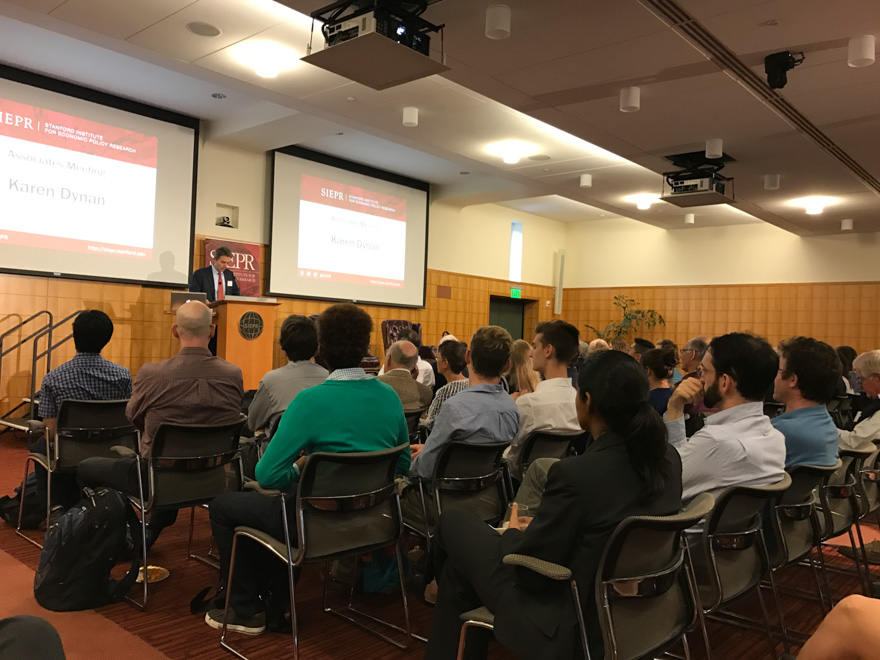
The number of Americans in the workforce is falling, according to a speech at Stanford by Karen Dynan, chief economist and assistant secretary for economic policy at the U.S. Department of the Treasury.
Dynan spoke about key challenges for long-term economic growth to a full room of students, professors and businesspeople at the Stanford Institute for Economic Policy Research (SIEPR) on Tuesday, emphasizing the challenges associated with the fall in labor force participation.
The percentage of the population that is either working or actively seeking work is currently on a downtrend for both men and women.
According to the U.S. Department of Labor, labor force participation for all men aged 16 and older has fallen from 75.1 percent in 1994 to 69.2 percent in 2014. A similar trend with women has started to appear more recently, with labor force participation falling from 59.2 percent in 2004 to 57.0 percent in 2014.
“There was a big run up in labor force participation in the latter part of the last century, and that was largely because women were flooding into the workforce,” Dynan said. “The rate of decline accelerated around the start of the recession.”
Labor force participation among women continues to grow in most countries economically comparable to the U.S., which according to Dynan may be due to our less family-friendly labor market. Mark Duggan, the Trione Director of SIEPR who facilitated Tuesday’s event, highlighted the fall in labor force participation among women as especially startling.
“The figures that you put up kind of horrified me,” Duggan said.
Dynan, however, sees the disparity among countries as a “glass half-full” situation because it indicates that our own trend could be reversed.
Dynan also discussed possible solutions to the challenges of household economic growth, recommending options that she says “increase overall growth without the age-old trade-off between equity and efficiency.” Those solutions include encouraging labor force participation by expanding earned income tax credits, increasing opportunities to borrow and save by making saving easier and more automatic and increasing worker skills by making higher education more accessible.
Dynan commended SIEPR for its work, reminding the audience that it is the economic policy research like the work done at SIEPR that allows economists the opportunity to always be “in the room where it happens.”
Contact Zoe Sayler at zoeneile ‘at’ stanford.edu.
